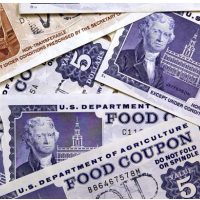House Bill would Force Disclosure of How Food Stamp Money is Spent

The media and nutrition advocates have been fighting for years to get the federal government to release information on what groceries are purchased by people using food stamps. Now, a member of Congress wants to know too, and has introduced legislation to force the disclosure of the data.
Representative Tom Marino (R-Pennsylvania) has proposed the “SNAP Transparency Act,” which would require the secretary of agriculture to establish a reporting system so retailers could track “the complete range, identities, sizes, quantities, and costs of particular food items” bought with benefits from the $80-billion Supplemental Nutrition Assistance Program (aka food stamps).
Journalists and others have asked for this information, primarily to help address nutritional and health problems of low-income people. However, they have been told by the U.S. Department of Agriculture (USDA) that it does not have the authority to collect the data. The bill would grant such power, and require the agency to post the information on a publicly searchable database.
The Tulsa World in Oklahoma reported that nearly half the state’s SNAP money went to Walmart stores. The newspaper was able to run the story only after state officials mistakenly turned over the data without knowing of the federal prohibition on releasing food-stamp purchases.
In South Dakota, the Sioux Falls Argus Leader sued the USDA in federal court to obtain SNAP details from retailers. The case is before the Eighth Circuit Court of Appeals.
-Noel Brinkerhoff
To Learn More:
Pa. Bill Would Require Disclosure of Food Stamp Purchases (by Felice Freyerm, Association of Health Care Journalists)
USDA Refuses to Release Food Stamp Profits Details (by Noel Brinkerhoff, AllGov)
Which Corporations Profit from Food Stamps? (by Noel Brinkerhoff and Vicki Baker, AllGov)
- Top Stories
- Unusual News
- Where is the Money Going?
- Controversies
- U.S. and the World
- Appointments and Resignations
- Latest News
- Musk and Trump Fire Members of Congress
- Trump Calls for Violent Street Demonstrations Against Himself
- Trump Changes Name of Republican Party
- The 2024 Election By the Numbers
- Bashar al-Assad—The Fall of a Rabid AntiSemite






Comments